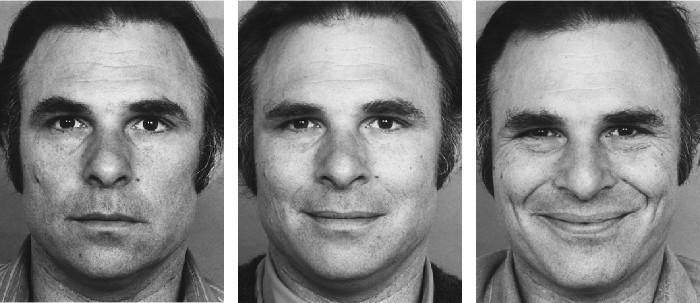Do you ever feel like something is squeezing your chest or you're out of breath? This can be a frightening experience, but it's important to know that there are physical and psychological causes behind why your chest may feel tight.
In this blog post, we'll look at the possible explanations for this strange sensation, potential treatments, and ways to help reduce or manage any symptoms. Read on to learn more about why your chest might feel tight and what steps you can take if this becomes an issue in your daily life.
An Overview of the Duchenne Smile
The Duchenne smile, or the genuine smile, is an expression of joy or pleasure that involves both mouth and eyes. This distinct facial expression is characterized by the contraction of two muscles: zygomatic major (the “cheek” muscle) and orbicularis oculi (the eye muscle).
When a person smiles, the zygomatic major muscles pull the corners of the mouth towards the eyes. At the same time, the orbicularis oculi muscles contract around our eyes, creating crow's feet wrinkles that spread outward. This combination of movement is the Duchenne smile, and it's thought to be an automatic response that cannot be faked.
In contrast, a non-Duchenne or "social" smile is often used in polite conversations, but it typically doesn't involve mouth and eyes. People may lift their mouth corners, but the eye muscle has little or no involvement.
Recognizing a Duchenne smile is an important social skill that can be used to gauge how someone might feel in a given situation. It's also been suggested that displaying a genuine smile may help create positive interactions, fostering trust and improving the overall quality of relationships.
So next time you find yourself in a social situation, look for the signs of a Duchenne smile to gauge emotional reactions and forge stronger connections with those around you.

A Duchenne smile is named after the French neurologist Guillaume Duchenne, who studied facial expressions and identified two types of smiles. The first type, the "Pan American" or voluntary smile, occurs when we consciously decide to put on a social face for others. This kind of smile involves only the muscles at the corner of the mouth, not the eyes.
The second type of smile is a Duchenne or genuine smile. This kind of smile involves the muscles at the corners of the mouth and those around the eyes—the so-called “crinkling” effect that we often associate with a true smile of happiness. Duchenne's smiles are more genuine than Pan-American and can be seen as a response to something that truly pleases us.
The scientific study of facial expressions has shown that it is virtually impossible to fake a Duchenne smile. This makes them invaluable in emotional intelligence, where a Duchenne smile can tell us a great deal about how someone is feeling. This knowledge can help build relationships, create empathy and understanding between people, and even help calm down tense situations.
What Makes a True Duchanee Smile Different From a Fake One
A genuine Duchenne smile differs significantly from a phoney one in that it contains both voluntary and involuntary muscular movements. The zygomatic major muscles, which run down your cheekbones and lift the corners of your mouth, as well as the orbicularis oculi muscles surrounding your eyes, which cause crinkles around the outside corners of your eyes, will be active when you grin with a genuine Duchenne smile.
An expression of a Duchenne smile appears more sincere and passionate when performed in this manner. The zygomatic major muscles are typically the only ones used in fake grins, giving them an artificial or unnatural appearance.
Though it can be difficult to tell whether someone’s smile is real, research has shown that people are generally better at recognizing true Duchenne smiles than fake ones. It’s thought that this ability may be because of the complex network of muscles involved in producing a genuine Duchenne smile—it’s difficult to replicate without looking unnatural.
How to Recognize and Give a Genuine Duchenne Smile
A genuine Duchenne smile can be recognized by activating both the zygomatic major muscle, which is responsible for lifting the corners of your mouth, and the orbicularis oculi muscle, which pulls up the corners of your eyes. A smile that only shows movement in the zygomatic major muscle may still appear friendly but is not a Duchenne smile.
When attempting to give an authentic Duchenne smile, remember that the movement of your eyes is key. Making eye contact with someone and smiling while engaging your orbicularis oculi will create a genuine Duchenne smile. It may take some practice, but learning how to trigger the muscle and produce an honest smile is possible.
A Duchenne smile helps create connection and trust with people by showing that you are genuinely happy to be around them or in a situation. You can practice giving authentic Duchenne smiles throughout your day, whether to friends, family, colleagues, or even strangers. Practicing giving genuine Duchenne smiles will help you become more confident in your ability to authentically connect with others.
Benefits of Smiling with a Genuine Duchenne Smile

The Duchenne Smile signifies true happiness and emotional engagement because it involves genuine, involuntary muscle movements. It conveys an authentic feeling that can be picked up by those around you, helping to create a more meaningful connection with your peers. This type of smile is also contagious; when someone gives you a Duchenne Smile, they’re more likely to elicit a similar response from you, which can help create a positive atmosphere in any situation.
Furthermore, research has shown that smiling with a genuine Duchenne Smile stimulates the brain's reward center and releases endorphins, naturally improving your mood and creating a feeling of overall well-being. This helps create a positive outlook and can encourage better performance at work or school.
Finally, smiling with a genuine Duchenne Smile has been linked to longer-term health benefits. This type of smile is thought to reduce stress levels, lower blood pressure, and boost your immune system, all of which help keep your body healthy. Additionally, a genuine Duchenne Smile can boost your self-confidence and make you appear more attractive to others, creating a positive feedback loop that can improve all aspects of your life.
FAQs
What makes a Duchenne smile?
In by 19th-century French neurologist Guillaume Duchenne, a Duchenne smile is distinguished by combining two muscles: the zygomatic major muscle, which lifts the corners of your mouth, and the orbicularis oculi muscle around the eyes, creating crinkles around the outer corners of your eyes.
How can I practice giving a genuine Duchenne smile?
When attempting to give an authentic Duchenne smile, remember that the movement of your eyes is key. Making eye contact with someone and smiling while engaging your orbicularis oculi will create a genuine Duchenne smile. It may take some practice, but learning how to trigger the muscle and produce an honest smile is possible.
What are some of the benefits of a Duchenne smile?
A Duchenne smile helps create connection and trust with people by showing that you are genuinely happy to be around them or in a situation. Additionally, research has shown that smiling with aches, a genuine Duchenne Smile stimulates the brain's reward center and releases endorphins, naturally improving your mood and creating a feeling of overall well-being.
Conclusion
As we have seen, the Duchenne smile is one of the essential facial expressions with immense scientific and social implications. It allows us to pick up the authentic emotions of those around us and boost our mood and well-being. It's no wonder many of us strive for a genuine Duchenne smile in our everyday lives. That being said, it is important to note that not all smiles are equal; each has unique characteristics.




